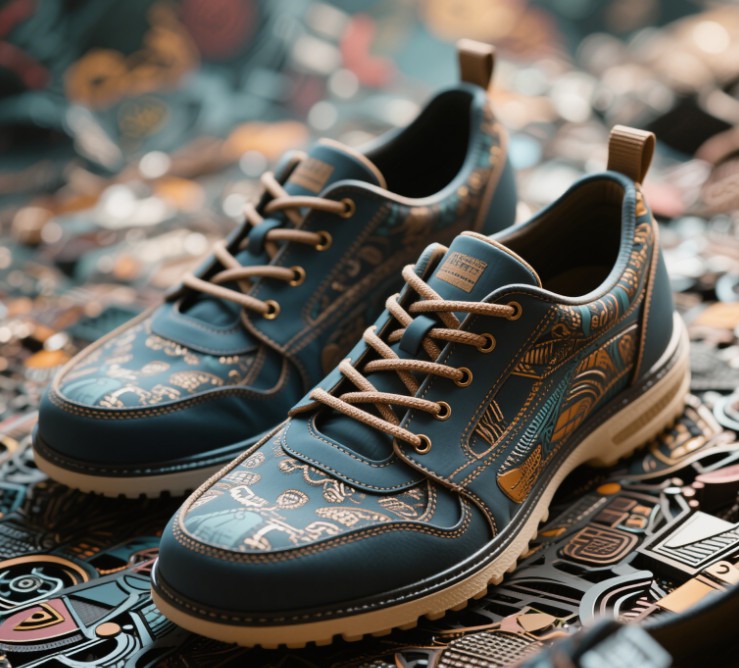A story about discovering how the right support can change the game.
The first time Malik twisted his ankle, he blamed the court.
The second time, he blamed his luck.
The third time, he blamed his shoes—and that changed everything.
Malik had always been the kind of guy who said yes to movement. Pickup basketball, weekend soccer, early morning jogs, the occasional indoor volleyball match with friends. He wasn’t a pro athlete, just someone who loved being active. But his feet? They were starting to stage a quiet rebellion.
It wasn’t just the ankle twist. It was the aching arches after indoor soccer, the sore knees after a 5K, the strange way his toes felt compressed after a casual game of tennis.
One afternoon, after cutting a basketball game short because of heel pain, Malik wandered into a sports gear store. He wasn’t planning to buy anything—just looking, just cooling down. But something caught his eye: a wall of shoes arranged not by color or style, but by sport.
He raised an eyebrow.

The clerk must have noticed his puzzled look. “Each sport works your body differently,” she said. “So your shoes should work differently, too.”
That was the first time Malik heard about performance footwear in a serious way. He stayed. He listened. And for the first time, he realized that all sneakers are not created equal.
A week later, he bought his first pair of real basketball shoes. High-tops with solid ankle support, a wide base for stability, and a sole pattern designed specifically for court traction. The first time he pivoted on the hardwood without slipping, he couldn’t help but grin.
“These grip like they want me to move,” he told his friend Jay, mid-game.
Jay laughed. “Man, you’ve been running in cross-trainers all this time?”
Malik didn’t even answer. He was already gone, cutting toward the hoop with a confidence his feet hadn’t felt in months.
Next came running.
Malik signed up for a local 10K with coworkers, thinking his gym sneakers would do. But this time, he paused. He remembered what the clerk had said and did his research.
He learned about running shoes—how the right pair cushions impact, supports your arch type, and adapts to whether you’re a heel striker or a forefoot runner. He learned that EVA foam meant a lightweight bounce, that some models were built for speed, others for endurance.
When race day came, he laced up his new runners and felt the difference from the first stride. No foot slap. No shin splints. Just rhythm. Just flow. He didn’t set any records, but he crossed that finish line with something new: trust in his shoes.
Then came indoor soccer.
Malik had never thought about how much different soccer was indoors until his usual sneakers sent him sliding across the polished gym floor like a cartoon character. He landed hard, nearly twisted his knee, and swore off the match early.
That night, back at the store, he found futsal shoes—low-profile, with gum rubber soles made for grip on smooth indoor surfaces. They had reinforced toes, designed for quick direction changes, and were built to keep you grounded and fast.
The next game? He moved like he’d played for years.
Quick cuts. Confident passes.
No slipping, no guessing. Just play.
One day, his friend Sara invited him to try tennis. He thought about just wearing his runners, but caught himself. He looked it up first.
Turns out tennis shoes are built with lateral movement in mind—unlike running shoes, which are made for forward motion. The right pair had reinforced sides, a tighter fit for stability, and durable soles for the court surface. He found a pair that felt snug and agile.
On the court, every sidestep, every sudden stop, every push-off felt intentional. He didn’t win—Sara destroyed him—but his shoes? They showed up.
Months passed, and Malik’s closet slowly changed.
Not filled with fashion sneakers or casual kicks, but with tools. Footwear matched to movement. Basketball, running, indoor soccer, tennis—and now he was eyeing trail running, maybe even rock climbing next spring.
He didn’t think of his shoes as just something to wear anymore.
He thought of them as partners in performance.
And funny enough, he got injured a lot less. He enjoyed his games more. And he started helping his friends choose better gear too—explaining how a shoe wasn’t just about fit, but about function. About understanding your sport and respecting your body.
Because the right shoe doesn’t just support your foot.
It supports your performance, your progress, and your passion.
And if there’s one thing Malik learned, it’s this:
Every sport deserves its own pair.